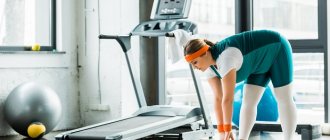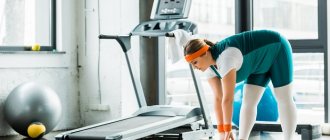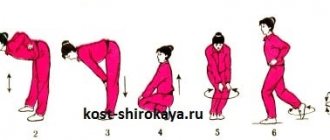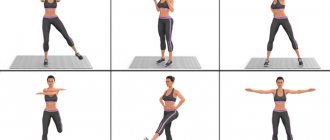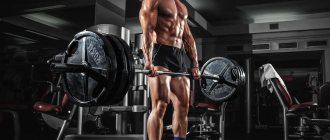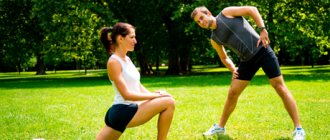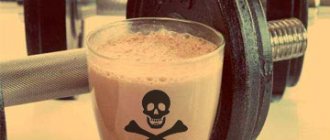Everyone has long known that before any workout you need a warm-up. Many people simply know this and that’s where it all ends. We often observe how some, even seemingly experienced athletes, begin their training immediately with a warm-up approach. Having loaded the barbell with minimal weight, they begin to perform the basic exercise, and for the second approach the working weight is already set. Then a time bomb is launched. Since this is far from a warm-up, such athletes sharply reduce the effectiveness of their training, and the consequences can be disastrous.
Rules for kneading joints
Now let's move on to practical recommendations for performing a full joint warm-up. For a more complete understanding of what we have to do, let us recall that joint warm-up before training should affect all joints of our body. In this case, we will use all the muscles, thereby receiving all the benefits of this type of warm-up, which we talked about above.
Below are a few rules that will help make kneading your joints as effective as possible.
Initial position
The optimal starting position during warm-up looks like this: standing, feet shoulder-width apart, arms either hanging freely along the body or fixed on the belt. The body is relaxed. We breathe with our bellies.
© Maksim Šmeljov — stock.adobe.com
Top down
The sequence of working out the body is important. The most commonly used sequence is top to bottom. Thus, we have a certain order of movements: neck-shoulders-elbows-hands-lumbar spine-hip joints-knee joints-ankles. Possible options:
- If you are warming up before wrestling, increased attention should be paid to the cervical spine and the joints of the upper shoulder girdle.
- Before “impact” training – the joints of the hand and metacarpophalangeal joints (boxing); shins, ankles, toe joints (taekwondo).
- The shoulder and hip joints require increased attention when warming up in weightlifting, powerlifting, etc.
The main principle is to warm up all the joints, but focus on the most vulnerable ones or those exposed to the greatest load.
From large to small
From a physiological point of view, it would be most logical to first warm up the large joints, then move on to smaller ones - this is due to lympho- and hemodynamics: in order to remove “stagnant” venous blood and lymph from a small joint, it is necessary to free the corresponding lymphatic and hemodynamic collectors of a larger diameter, and they are located near the larger joints of the body. According to the laws of physiology, the closer the collector is to the midline of the body (and to the heart), the larger it is. Thus, in addition to the other listed benefits from joint warm-up, we get one more - facilitating the work of the heart muscle.
Other rules
All movements you make should be smooth - only in this case you effectively use the muscles surrounding the joint being worked. In addition, sudden movements applied to unheated ligaments (and tendons too) can themselves lead to injury.
Breathing should be calm, deep and continuous. There is no need to strain, hold your breath, or exhale sharply, screaming, at least during joint warm-up. This is completely impractical. The rhythm of your breathing should speed up naturally, in sync with some acceleration in your heart rate.
You can visually see how a complete joint warm-up is carried out before training in the video:
Recipes for healthy eating
Roasted Brussels Sprouts with Bacon and Cheese
- 4.2 g Protein
- 6.1 g Fat
- 9.3 g Carbohydrates
- 120.1 kcal
30-40 min.
- #bacon
- #Brussels sprouts
- #second course
- #baking
- #greenery
- #lemon
- #low calorie
- #dinner
- #vegetables
- #cheese
- #dinner
Other recipes
Features of warming up in the gym before training
In the gym, the choice of warm-up methods is large: this is also a cardio zone, in which all exercise equipment is located - from exercise bikes and ellipsoids to treadmills and steppers, as well as other equipment.
You can also warm up in the gym using simple equipment: sliding on slides, spinning on a grace machine, jumping rope, hula hoop, and the like.
The principle of warming up on cardio equipment is the same: starting at a slow pace, gradually increase the speed, while using pulse sensors to keep your heart rate in the fat burning zone. On average, 120-130 beats per minute is enough to warm up. Do a cardio warm-up for 5-7 minutes, then slow down to a gentle walk for the last minute.
What consequences can there be if you don’t warm up before strength training?
- Firstly, by training without warming up the muscles, you can get any injuries to bone, muscle and connective tissue . Tightening of muscles and ligaments in a cold, unheated state is a normal process, but if such muscles are immediately contracted with additional weights and, in addition, stretched, you can get at least a spasm, inflammation, and, worse, stretching and rupture, depending on the external temperature and resistance forces in the muscles.
- Secondly, the joints suffer . Fortunately, modern medicine has come to implantation of joints, but this cannot be called a full life. Unheated joints are a very fragile mechanism, although when warmed up they are able to overcome heavy loads. Starting a workout without including joint warm-up leads to inflammatory processes, deformation of cartilage and deterioration of joint mobility in the future.
- Thirdly, ignoring the warm-up before training at home or in the gym leads to deformation of the ligamentous apparatus , which connects the muscles and joints. Ligaments are also susceptible to stiffening and stretching, so performing a load without warming up can easily injure them, and they take a very long time to heal, or even last a lifetime, just like joints.
Exercises for warming up the whole body at home
- Start by walking in place, adding breathing techniques, raising your arms out to your sides.
- Perform side steps, and the pace should be energetic, 1 minute is enough.
- Raise your knees to your chest one at a time, as in aerobics, then, at the same pace, perform heel thrusts to your buttocks.
- Tilt your body to the sides alternately.
Warm up for the neck
- Turn your head to the sides 5-10 times in each direction.
- Bend to the sides (ear to shoulder) 5-10 times.
- Make a semicircle with your head, rolling your chin over your collarbones from side to side, without throwing your head back.
Warm-up for arms
- Circular rotation of the arms in the shoulder joints in both directions 5-10 times.
- Circular movements in the elbows and hands 5-10 times.
- Stretching your arms parallel to the floor with an emphasis back, palms behind your back.
Warm-up for the back
- Bend your torso forward on straight legs, without rounding your back: 10-15 repetitions.
- Slow twisting of the body towards the floor and back up. Gradual relaxation of all parts of the spine – 5 times.
- Lock under the knees, rounding and arching the spine (similar to the “cat” exercise).
- Twisting (turning) the body from side to side. Perform without sudden movements.
Leg warm-up
- Circular rotation of the pelvis in one direction and the other.
- Circular rotations of one leg at the hip joint on both sides. On the right and left leg, respectively.
- Extension of the legs at the knee joints while holding the leg overhang.
- Circular rotation of the ankle joints on both sides.
- Bend your torso towards your straight legs while standing, holding the flexion of your hamstrings for a few seconds.
- Stretching the adductor surface of the thighs by rolling from foot to foot.
- Stretch the quadriceps of the thigh with traction of the heel back to the buttocks.
- Calf raises with a heel roll to stretch the calf muscles.
How to properly warm up before training: warm-up plan
Any workout should start with a light cardio load: it can be walking, jogging, an exercise bike, jumping rope, or a slide. These are any exercises that warm up the body and gradually increase the heart rate without contracting the muscles, as with weight equipment and exercise machines.
Under no circumstances should you start warming up abruptly; this applies not only to the strength of extension or range of motion, but also to speed. You need to start warming up slowly, gradually increasing the pace, and then the range of movements.
The main sign that the muscles are really warm is a feeling of warmth in the muscles and sweating. When the first sweat appears, this means that the body has warmed up enough and you can start exercising.

